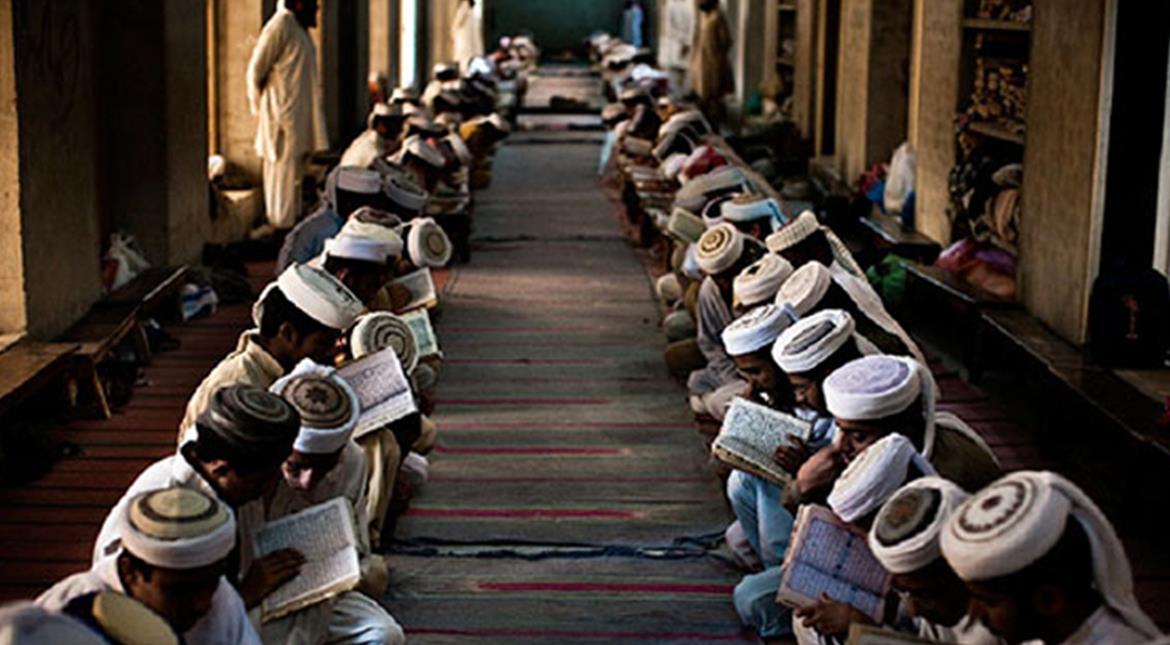
Indian state of Uttarakhand’s decision to incorporate “Operation Sindoor”—India’s controversial 2025 military strikes in Pakistan-administered Kashmir—into madrasa syllabi has ignited debates over historical revisionism and the politicization of education. While the Indian state government frames this move as fostering patriotism and countering terrorism, critics argue it whitewashes a strategically flawed operation and imposes a state-sanctioned narrative on vulnerable students. The initiative, part of a broader push to align madrasas with nationalist ideals, risks distorting historical accountability and deepening communal divides.
Curriculum Changes and Political Symbolism
The Uttarakhand Madrasa Board announced in May 2025 that “Operation Sindoor” would be added to its curriculum to “instill national pride” in students. Madrasa Board Chairman Mufti Shamoon Qasmi claimed the chapter would highlight the military’s “strength, bravery, and courage” during the operation, which targeted alleged terror camps. The move follows earlier efforts to introduce Sanskrit and Hindu epics like the Ramayana into madrasa education, though those plans remain pending. Rajasthan is now expected to adopt similar measures, signaling a nationwide trend of recasting military actions as pedagogical tools.
Officials argue that teaching “Operation Sindoor” will integrate madrasa students into the “national mainstream.” Uttarakhand Waqf Board President Shadab Shams defended the decision, stating, “If children in Devbhoomi [land of gods] do not learn about this valour, who will?”. However, the curriculum’s focus on military heroism omits critical context, including the operation’s disputed outcomes and its geopolitical repercussions.
The Unspoken Realities of Operation Sindoor
Contrary to state narratives, Operation Sindoor—launched in May 2025 after a terrorist attack in Pahalgam—is widely regarded as a strategic failure. Despite India’s claims of destroying nine terror camps, independent analyses reveal no tangible reduction in cross-border militancy. Pakistan retaliated with missile strikes, causing destruction of 3 India top of the line fighter jets, while the international community, including the U.S., declined to endorse India’s actions. A ceasefire brokered by the U.S. exposed diplomatic vulnerabilities, with President Donald Trump claiming credit for de-escalation—a move that inadvertently internationalized the Kashmir dispute.
Critics highlight operational shortcomings, including intelligence failures. Satellite data from Maxar Technologies showed a spike in image requests for Pahalgam weeks before the attack, yet Indian agencies allegedly failed to act on this “actionable intelligence”. The curriculum’s sanitized account ignores these lapses, instead valorizing the operation as an unqualified triumph.
Implications of Historical Distortion
Teaching a mythologized version of Operation Sindoor risks entrenching a generation in a fabricated reality. By omitting the operation’s diplomatic fallout and human costs, the curriculum reduces complex geopolitical events to simplistic tales of heroism. This approach mirrors broader trends under Prime Minister Narendra Modi’s government, which has weaponized cultural symbols—like the sindoor, a Hindu marital emblem—to conflate nationalism with militarism.
Such pedagogy also exacerbates communal tensions. Madrasas, often scrutinized as hubs of “anti-national” activity, are now pressured to adopt state narratives that alienate Muslim students. The Uttarakhand government’s concurrent crackdown on unrecognized madrasas—over 180 shuttered since December 2024—further marginalizes these institutions. Historically, Indian Muslims have faced disproportionate suspicion in counterterrorism efforts, as seen in the 2008 Delhi police shootings of Muslim youths falsely linked to terror plots. The new curriculum risks deepening this mistrust by framing military actions as unilateral successes while ignoring communal grievances.
Political Motivations and the Erosion of Critical Thought
The syllabus revision aligns with the ruling Bharatiya Janata Party’s (BJP) broader agenda to reshape India’s educational landscape. By embedding Operation Sindoor in textbooks, the state conflates dissent with disloyalty, discouraging critical inquiry. As journalist Omair Ahmad notes, the operation’s open-ended branding allows it to “mean whatever the government wants,” from cross-border strikes to suppressing domestic dissent.
This strategy mirrors past efforts to dilute secular curricula, such as revisions to downplay Mughal history and emphasize Hindu-centric narratives. The BJP’s emphasis on “national unity” through education often sidelines pluralism, instead promoting a monolithic identity that erases minority perspectives. For madrasa students, already marginalized in India’s education system, this imposes an additional burden of conforming to majoritarian ideals.
Education as a Battleground
Uttarakhand’s “Operation Sindoor” curriculum exemplifies how education is increasingly weaponized to serve political ends. By recasting a flawed military operation as a pedagogical triumph, the state prioritizes nationalist indoctrination over historical accuracy. This not only misleads students but also undermines India’s democratic ethos, which thrives on dissent and accountability.
Rather than glorifying contested operations, India’s education system should foster critical thinking and nuanced understanding of conflicts. Addressing the root causes of extremism—such as socioeconomic disparities and communal discrimination—requires more than symbolic gestures. Until then, reducing complex histories to nationalist fables will only deepen divisions, leaving future generations ill-equipped to navigate India’s pluralist realities.
Comments
Post a Comment